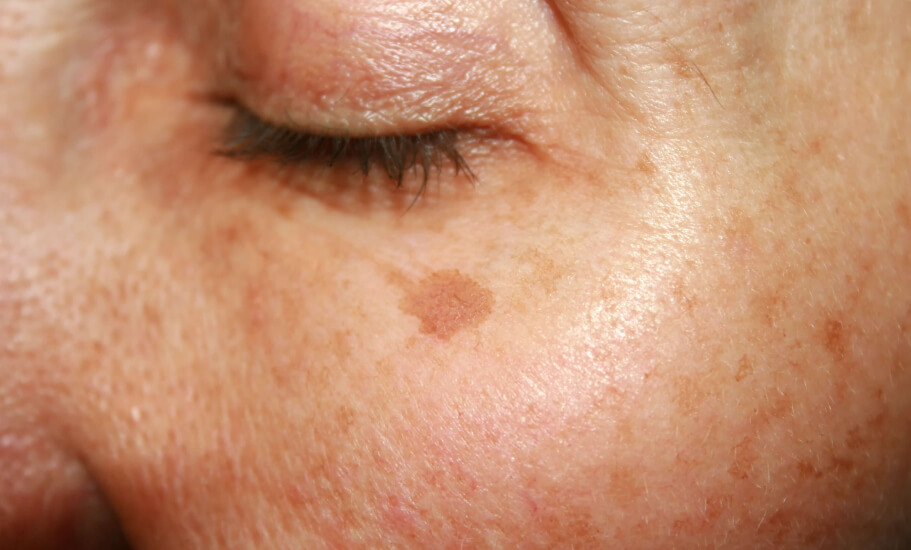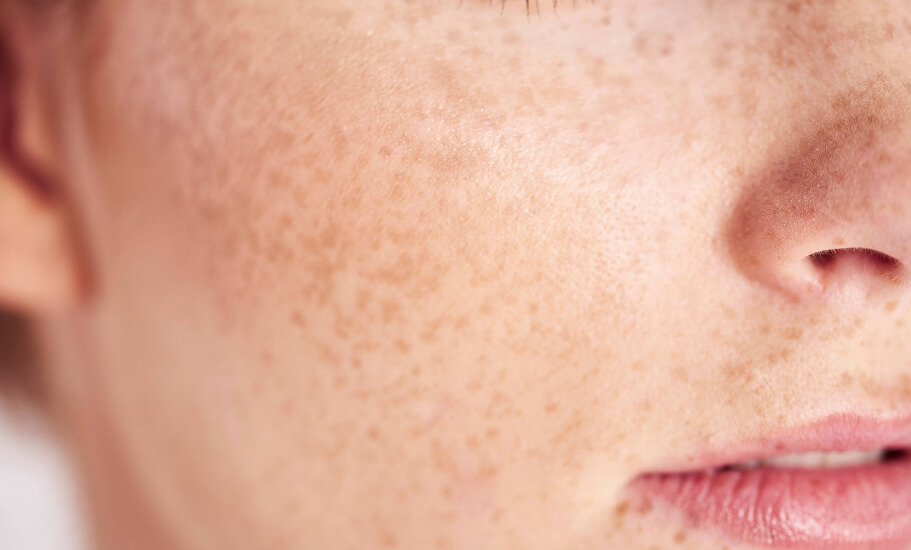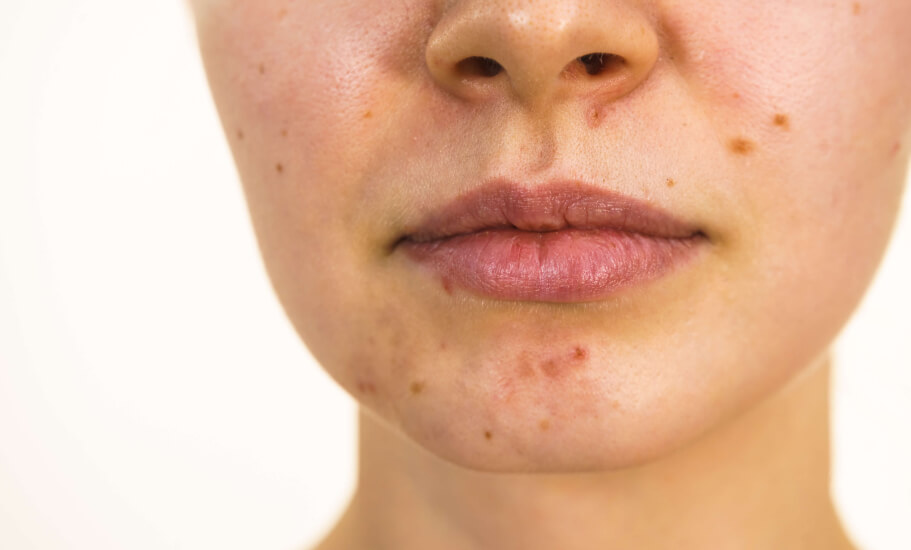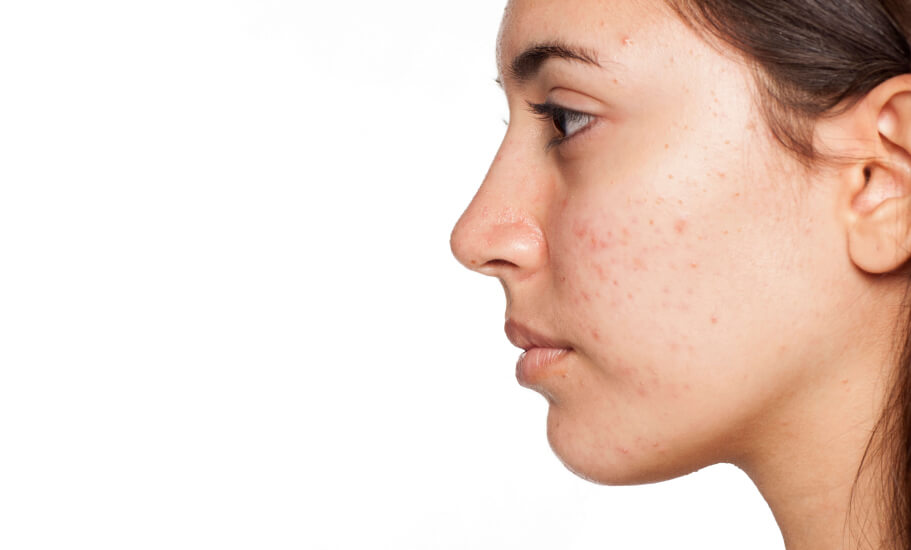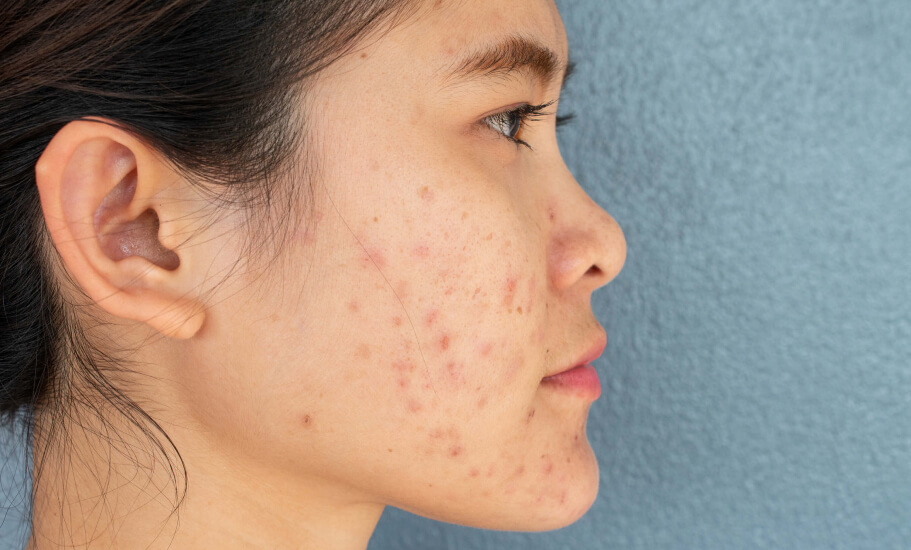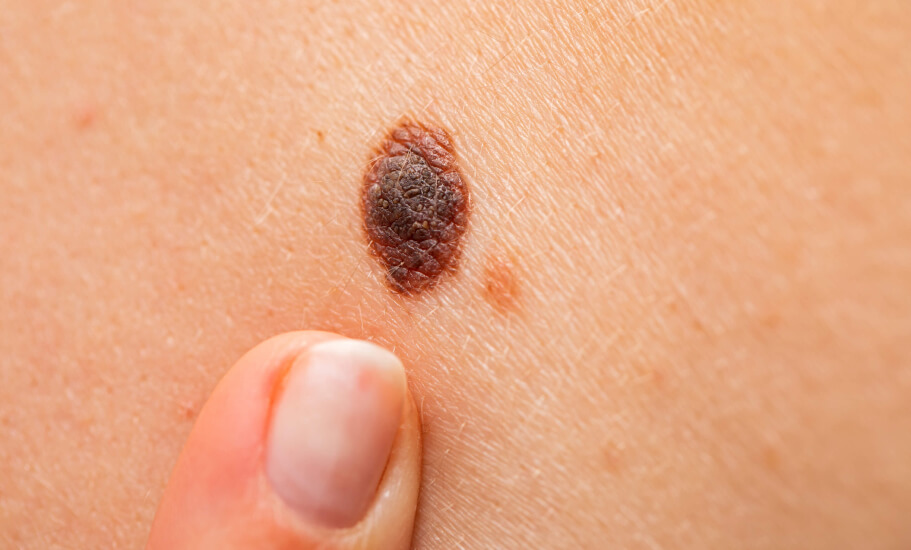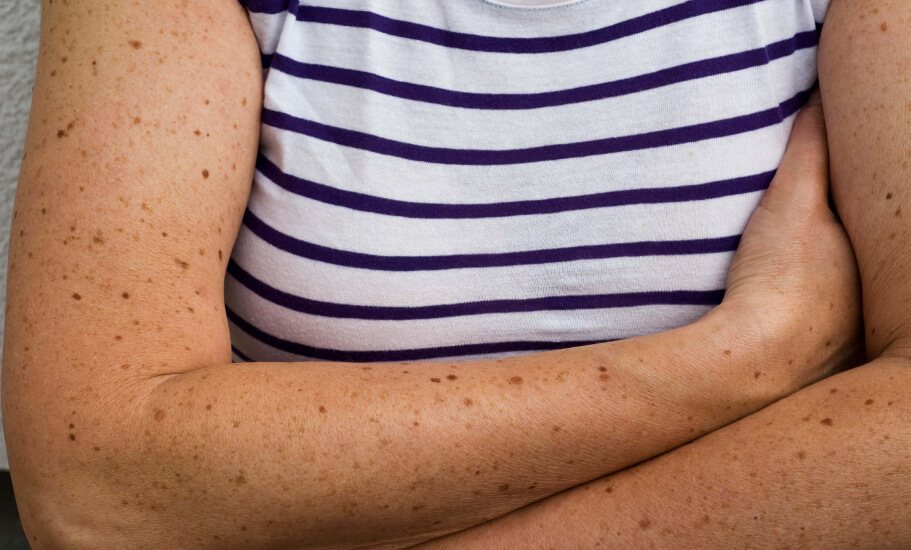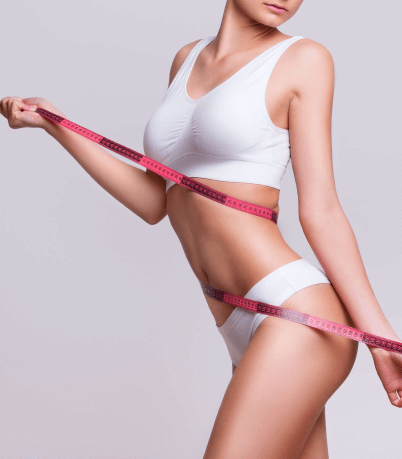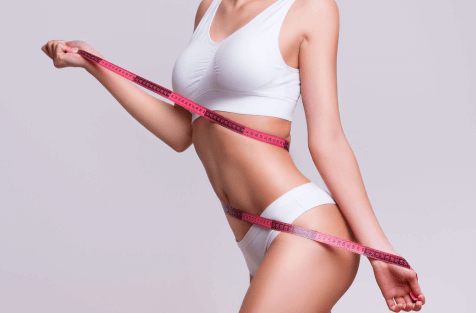Category: Aesthetics
Enjoy the Sunshine With Healthy, Glowing Skin
Being able to live in a place full of sunshine is a blessing. The sun is said to make us happy. In response to sunlight, the brain releases a hormone called serotonin, and one’s mood is boosted, and we feel calm and focused with serotonin. Maybe that’s why people pay so much for vacations in places with beautiful weather. In addition, our bodies also need sun exposure to produce vitamin D. With all that said, there is also the need to protect our skin from it. There are a few myths surrounding this topic. One being our skin doesn’t need sunscreen/ sunblock if we aren’t looking to whiten it. Similarly, if we want to have honey-sun-kissed tan skin then we should avoid those products; the other is that those who have a darker skin tone are naturally immune from sunburn, and sun protection is only recommended for those with lighter skin to prevent freckles or dark spots. These are all untrue. Sun protection has nothing to do with how white or tan our skin is or how we would like to appear.
Why is sun protection important?
Wearing sun protection daily is necessary as it reduces the risk of sunburn, signs of aging, skin cancer, skin pigmentation, and inflammation. When you get too much sun exposure (UV rays), they can reach the inner layers of the skin which damages the skin cells including the DNA. In severe cases, it can cause skin cancer. Sun damage can add up over time as well and can lead to wrinkles, dark spots, freckles, etc. You do not need to have a specific skin type to wear SPF religiously. Generally, darker skin types contain more melanin, which may technically mean a reduced risk of skin cancer, but there is still a risk. Besides, just because you’re sitting in an office all day doesn’t mean you don’t need sun protection. The UV rays can still come through windows and cause some damage.
For sunscreen/sunblock to provide its benefits, there must be a proper application method. Firstly, make sure you apply it all over your face, especially areas that are hard to reach or overlooked, like the back of your ears or neck. Then reapply every 2 hours. This is something that most people do not remember. We think that if we apply it once during the day, then we are protected all day- but we are not. Wearing sun protection doesn’t mean that you are immune to sunburn, it can still happen. If you decide to wear make-up, make sure it is applied before your face makeup is put on. There are products that you can use to reapply SPF after you’ve done your makeup. Some setting powders have SPF in them, an SPF setting spray, or those in powder format.
How do you choose the right product?
It is a common misconception that sunblock and sunscreen are the same. Knowing the difference can assist you further in picking up a quality form of SPF. Sunscreen filters some of the UV rays, and still let some into your skin. Sunblock reflects the sun’s rays and “blocks” them from getting into the skin.
A quality sunblock is also crucial for the best benefits. Make sure to look for products that say “broad spectrum” as this will protect you from UVA and UVB rays. UVA rays are the ones that prematurely age your skin, causing wrinkles and age spots, while UVB rays cause sunburn. Overexposure to both can lead to skin cancer. Secondly, consider the SPF. It ranges from anywhere between 10 to 100. For more protection, it’s suggested to go for anything with 30 and above. Next, you need to know your skin type. If you have acne-prone skin, find something that says it is “non-comedogenic,’ as these do not block your pores. If you have skin more on the dry side, note finding one that has hydrating ingredients like hyaluronic acid.
There’s more to it than UV rays…
Not only is being outside and in sunlight a factor that impacts the way your skin looks, but blue light is as well. Blue light is the light that is emitted from your devices like the TV, computer, and smartphone. Blue light can penetrate deeper into the skin than UV rays, and that accelerates aging and dull the skin. Additionally, blue light penetrates our eyes deeper than UV rays do, it reaches our retina, increasing our risk of eye damage such as macular degeneration and cataracts.
Oral sunblock, what is it?
Sun protection has recently taken a step further, now having oral sunblock. Yep, you heard me. This doesn’t mean you are eating the cream/ lotion, it’s a supplement that you ingest that is high in antioxidants called “polypodium leucotomos.” This can increase the time it takes for someone to burn when exposed to UV rays. Now, this is not to be used instead of sunscreen/ sunblock either, but as an extra layer of protection. The antioxidant essentially helps the skin from oxidative damage. What this does is it gives you total protection in case you missed a few spots. There is no need to reapply or re-take the oral sunblock. It works at a cellular level to even reverse and reduce sun damage that has already taken place. It’s recommended to take this as well as any SPF topical protection, to make sure you are not only stopping any further damage from UV exposure but also healing any damage that may have already happened.
There are times when there are just a few costs associated with enjoying the good things in life (sunshine). Sun protection is an essential part of our skincare routine, even if it often goes overlooked. Daily sun protection should be just as natural as brushing our teeth. We are exposed to all sorts of harmful rays daily, and this can negatively impact our skin quality, so if we wish to have a more radiant and youthful complexion, then we must start right here, right now. And if we do this repeatedly, our skin will thank us in the long run.
Sources and references:
Dermatology Treatment and Research Center – How Does Sun Exposure Affect Skin?
Everyday Health – Is Blue Light Harming Your Skin Health?
Healthline – How to Safely Get Vitamin D From Sunlight
Healthline – What Are the Benefits of Sunlight?
Healthline – Every Sunscreen Question You Have, Answered
Johns Hopkins Medicine – Sunscreen and Your Morning Routine
NBC News – How to choose the best sunscreen, according to these dermatologists
Very Well Health – The Proper Way to Apply Sunscreen
Very Well Health – The Difference Between Sunscreen and Sunblock
Navigating Uncertainty: Self-Care Tips During Cancer Treatment
The glass is half-full
When we are in the process of battling illness, we have two choices: we can either see the situation as the glass half-full or the glass half-empty. It is important to think that we are still living life, instead of just surviving through it. Living is riding the highs and lows, with the absolute commitment to look after ourselves. When Dr. Juliana was diagnosed with breast cancer, she chose to take control. There are many unfortunate side effects that come with cancer treatment that are new and shocking to our system. However, with Juliana’s professional medical background, she was able to develop solutions for her side effects, instead of just allowing them to tear her down.
The game plan to heal our skin
Many issues can happen to the skin during cancer treatment and persist after, such as inflammation, acne, redness, irritation, dryness, and sagginess due to collagen loss. Chemotherapy, other drugs and radiation therapy can cause the skin to be red, flaky, rough, dull, with fine lines, wrinkles, and enlarged pores.
The most common skin change that occurs from chemotherapy is dryness and irritation of the skin. Choosing the right daily skincare products that are pH friendly for your face and body is important. You can focus on cleansing products that are soap-free and do not strip your skin of its natural moisture. Dr Juliana chose to use a milk facial cleanser throughout her chemotherapy treatment. For the body make sure you moisturize daily. Emollients such as shea butter are a good option as they help to prevent natural water loss from your skin. For your face choose a cream rather than a lotion as these are better at managing dry skin. Stay away from products that have strong artificial fragrances as this can irritate the skin. Instead choose products that use natural scents or have gentle fragrances.
For some people acne formation from their medication can be very frustrating and affect self-esteem. Let your medical team know about this and they can prescribe either topical or oral medication to help control your acne. Even if skin is affected by acne, it is still very important to maintain hydration as overly dry skin can cause our oil glands to go into overdrive which can in turn worsen acne. It is often a misconception to turn to acne skincare products which can be too harsh and drying for the skin. Instead choose products that are gentle, hydrating, anti-inflammatory and non-comedogenic. It is advisable to manage acne even during your cancer treatment as they can prevent formation of acne scars on the skin. Dr. Juliana experienced acne on her back and scalp which she treated with topical antibiotics during her chemotherapy. Thereafter she used laser treatment as a stronger approach to clearing her acne.
Another important tip for managing skin during cancer treatment is to regularly apply a sunblock with a minimum SPF of 30. Going outdoors for some fresh air and exercise throughout the duration of your cancer treatment is very beneficial if you are feeling well enough to do so. However, try to avoid the times of the day when the sun is at its hottest to minimize pigmentation formation and sun damage to the skin. Throughout her chemotherapy Dr Juliana went for daily walks at the beach and park with her son and husband as this helped to manage some of the negative side effects of her treatment.
A healthy mind and body
Having to deal with a cancer diagnosis leads to a lot of stress and negative emotions which can take a toll on both the body and the mind. Having good support from friends, family and cancer support networks can help us to manage this. You can ask your medical team for referrals to these support networks. Dr Juliana reached out to the Breast Cancer Foundation group in Singapore where she was able to get in touch with other cancer survivors who provided much needed support and advice in navigating the uncertainties of cancer treatment.
Another wonderful way to deal with stress and negative side effects from cancer treatment is to stay active and fit within your means. Dr Juliana was a physically active person before her cancer diagnosis but during her treatment her energy levels dropped tremendously from her chemotherapy and appetite loss but she made it a point to keep her stamina going with daily walks. It took about a year after her chemotherapy had ended before she felt that her fitness levels had returned to what it was. Start slow and do not try to push yourself too hard, when you feel your body is ready you can gradually increase the intensity of your exercise.
Some people experience weight loss due to the loss of appetite and nausea from chemotherapy whilst others gain weight as a side effect of their medication. Whichever direction your body goes, the best way to manage it is through eating a well-balanced, clean and nutritious diet, staying hydrated and keeping active where possible. A lot of people find weight gain challenging to lose even after their active treatment has ended.
Dr Juliana felt that having a positive mindset was key in getting through cancer treatment and in the recovery thereafter. Focus on activities that keep you calm and grounded which in turn helps to clear and balance your mind. It could be spending time in nature, going cycling, enjoying a delicious meal, listening to music, meditation or even cuddling a pet. Sharing emotions with loved ones or penning them in a diary can also help.
Always strong, feminine and beautiful
For some, losing hair is one of the hardest parts when undergoing cancer treatment. It’s normal to feel angry, anxious, or low in confidence when watching our hair fall off. The best thing we can do is face and embrace it with grace and optimism. Consider shaving the hair off instead of waiting for it to fall off, then start wearing colorful headscarves, take oral hair growth supplements, or even find some clinical treatments that specialize in hair growth.
When it comes to female organ-related symptoms, such as vaginal dryness, urinary incontinence, decrease in sex drive, pain during sex. For that, specialized lasers that target the vaginal wall are now available to improve collagen thickness/tightness of the canal without causing any bleeding or injury.
How about Onco-Aesthetics?
Onco-Aesthetics is a new integrative approach to improve the quality of life for people living with cancer. These modified skincare treatments are performed by advanced trained therapists who are knowledgeable in caring for cancer patients’ already sensitized skin. To begin with, choose a doctor that is familiar with how cancer treatments can affect us and our treatment choices. It is recommended that we choose a safe space that focuses on cleanliness and infection control, as our immunity will be low and we may continue to be compromised even after the treatment has finished.
We deserve to feel our best
All of the above options of self-care can lessen the negative outlook of how cancer treatment can impact your appearance, overall mental and physical health. The journey for any cancer patient is a difficult one, but the road to recovery can be beautiful and empowering. It is all about perspective. We are here to rebuild and thrive, at the same time we learn so much about our bodies and how to treat them well no matter the circumstances. Here we send love to cancer survivors that share the same story. Let’s celebrate Life After Cancer!
Sources and references:
Healthline – 6 Things That Helped Me Feel Like Myself During Chemo
Provision Healthcare – Wellness for cancer patients: 4 keys to self-care
Navigating Uncertainty: How Our Bodies Change During Cancer Treatment
There will be times in life when we expect there to be sun, but it rains instead. Uncertainty is such an uncomfortable feeling: being out of control and wishing we could see the path that is before us. At the age of 38, Dr. Juliana was diagnosed with breast cancer. While the diagnosis itself is frightening, dealing with what is next, which is the cancer treatment and the side effects it brings added an extra layer of fear. She underwent a combination of treatments with chemotherapy, radiotherapy, surgery, and Herceptin therapy. With all these comes the hope of recovery, together with a list of changes on her skin, hair, and body.
Skin
During and after the cancer treatment, depending on the types of drugs used (such as steroid, immunotherapy drugs), the skin can go through much stress and as a result, patients may experience inflammation, acne, redness, irritation, and dryness on the face or the body. Some other symptoms are dry and dull skin, pigmentation/ hyperpigmentation, fine lines, and wrinkles, enlarged pores and sagging skin. Sagging skin occurs because of collagen breakdown, which is also contributed by cancer drugs and physical stress on the body from the treatment.
Hair
Of course, the most common side effect that is seen is hair loss, and as females, our self-esteem could take a big hit. Chemotherapy can cause hair loss all over the body, not just the scalp. These can include your eyelashes, eyebrows, underarms, and pubic areas. Excess hair can occur as well after treatment ends in an accelerated growth on the face and body.
Body
Last but not least, there are changes to the body like weight fluctuations, muscle aches, water retention/swelling, and a lot of changes to the female reproductive system. Depending on the treatment, menstrual cycles can stop temporarily or permanently due to the imbalance of female hormones. There are also symptoms like vaginal dryness, urinary incontinence, decreased sex drive, and painful sex. This happens due to the shrinking and thinning of the vaginal wall and lack of estrogen. Chemotherapy and steroids during treatment may affect appetite leading to either weight gain or weight loss.
Most patients will strike a combo of skin, hair, and body changes. All these changes can be overwhelming, and as the journey continues, not knowing what else will happen next just makes it depressing. However, it is important to keep in mind that every person is built differently, so not everyone will react the same way to cancer treatments. Simply knowing what to expect can reduce some of the anxiety by feeling a little more prepared. The good news is that side effects are temporary, and there are actions we can take to ease and heal from them. In life, we must learn to dance in the rain, and we all have one another’s back. In our next blog post, we will offer some self-care tips that allow and encourage you to cope with these side effects a little more easily and comfortably.
Sources and references:
Everyday Health – When Cancer Changes Your Appearance
Cure Today – The Skin You’re In: Coping With Body Changes After Cancer
Collagen: Real Supple Skin Is Your New Filter
Collagen in a nutshell
We’ve all heard about collagen and how important it is to keep us looking youthful, without any filters from social media. Collagen is the most important protein in the body that forms the connective tissue or main structural support for our bones, joints, and skin. It makes up about 80% of our skin and is what makes our skin more youthful-looking. Imagine collagen as ropes of protein in our skin that is tightly bound. As we get older the ends begin to loosen and fray. So instead of firm-looking skin, they end up looking loose, saggy, and dull.
More production, less breakdown
In order to maintain our collagen levels, we need to reduce the breakdown. This can be done by minimizing exposure to excess UV light, pollution, not smoking, keeping stress down, and eating a clean and low-sugar diet. The other way to do this is to replace lost collagen through reproduction in food and supplements. Collagen can be consumed through the foods we eat like meat, bone broth, fish, eggs, algae, and spirulina. Interestingly, Vitamin C is important for collagen production and is a strong antioxidant that prevents the breakdown of collagen. Loading up on Vitamin C from citrus fruits and berries is a healthy way to do it.
So many options, how are they different?
Collagen in supplement form is more efficient because it has been hydrolyzed, meaning that the collagen long chains have been broken down into shorter chains called collagen peptides which are then more easily absorbed throughout the gut. This is what we called: increased bioavailability, and bioavailability refers to how much of what we consume actually reaches our bloodstream. The more bioavailable a dietary supplement is, the more efficiently it is absorbed, therefore triggering the benefits of the supplement.
There are many types of collagen supplements and creams available in the beauty and wellness industry, and that could be overwhelming. Collagen mostly occurs in the deeper level of the skin, called the dermis (which is lower than the epidermis), it is very hard for topical collagen in creams to reach this level due to the size of the particles. The capsule and powder form supplements have to be broken down by our stomach first, using digestive enzymes before they are absorbed by the gut and then are further metabolized by the liver or kidney before they can enter into the bloodstream. Sprays and other oral preparations on the other hand do not require to be absorbed by the gut and are instead absorbed directly by the oral mucosa and enter into the bloodstream. The advantage of the oral method of absorption is that it is faster to take effect and also will not be affected by our digestive system.
Choose wisely
Collagen is incredibly beneficial for our skin as it serves as the building block for our body to produce our own collagen, and then it also stimulates our fibroblasts which are the natural cells in our body that produces collagen to boost its production rate. Besides, it acts as an antioxidant that helps to prevent the breakdown of our existing collagen.
If we want to age gracefully, then collagen is necessary for us to replenish. We hope this article provides some guidance on choosing the right collagen products for you.
Sources and references:
Healthline – Top 6 Benefits of Taking Collagen Supplements
WebMD – Health Benefits of Collagen
Cedars-Sinai – Collagen for Your Skin: Healthy or Hype?
Everyday Health – 8 Potential Health Benefits of Collagen, and 1 Thing It Can’t Do
Having Issues With Maskne? Here’s Everything You Need To Kow
Wearing masks have become a part of our daily lives during the Covid-19 pandemic, and if you’ve been developing skin problems as a result of wearing a mask, you’ve got a condition known as “maskne”, which is a common side effect of mask-wearing.
Maskne is an umbrella term for a variety of skin conditions caused by prolonged mask-wearing and occurs commonly in healthcare professionals, as well as in women of all ages.
While acne is one of the most common skin conditions that is caused by mask-wearing, maskne encompasses a range of other skin conditions such as:
- Folliculitis
- Rosacea
- Contact dermatitis
Causes of Maskne
As Maskne is associated with a variety of skin conditions, its causes vary according to the specific condition, but generally, Maskne is caused by the following:
- Clogged Pores. Mask-wearing causes oil and sweat that’s released by the pores to get clogged, and this may cause acne.
- Friction from Mask Wearing. Prolonged contact of the mask against the skin can thin or break the skin, leading to friction and irritation. This skin damage can lead to redness, sensitivities, irritations, abrasions.
- Humidity. Masks essentially help to keep our saliva and other droplets that are emitted from breathing, talking, coughing, or sneezing – from getting out into the air and potentially transmitting diseases or illnesses. This creates a seal of humidity that prevents moisture from escaping, resulting in an environment where acne-causing bacteria can thrive.
Maskne Treatments and Tips For Prevention
First of all, keep wearing your mask, as keeping your mouth and nose covered is one of the best ways to protect yourself and your loved ones from Covid-19.
- Wash your face regularly. Use gentle, non-comedogenic milk or gel cleansers that do not irritate your skin as harsh cleansers may make it harder for your skin to heal
- Wash your cloth mask regularly, preferably after each use. This removes any germs that may have accumulated during wear
- Take a break from makeup. Certain beauty products cause our pores to clog and may delay healing.
- Moisturize your face before wearing a mask. Before wearing a mask, apply a gentle, non-comedogenic moisturizer to your skin. Be sure to check the label for the words non-comedogenic, non-clogging or non-acnegenic to find the right option for you. Ingredients such as dimethicone or ceramides can help repair the skin barrier to prevent irritation from the masks.
- Use a breathable, cotton mask that has at least two layers. Make sure the fabric that touches your face is breathable. Cotton is a non-irritating, breathable fabric.
Conclusion
Maskne mainly involves skin conditions like acne that are caused from mask-wearing. It is important to keep wearing your mask during the COVID-19 pandemic. If your symptoms persist for more than a week after home care, consult a doctor who will be able to advise you on the next steps.
You may need to consider other treatment options for acne.
Dark Eye Circles Treatment in Singapore
Having dark eye circles often lead to common misconceptions, where people mistake one with dark eye circles to be tired and aged. There are in fact many different causes of dark eye circles. At Fusion Medical, we offer targeted treatments to remove your dark eye circles, bringing out your eye’s radiance and shine.
What are dark eye circles?
Dark eye circles make your eyes look tired and aged, causing you to look older and less radiant than you actually are. This may result in others mistaking you as fatigued or unmotivated. While dark eye circles don’t pose a threat to your overall health, its appearance can be a hit to one’s self-confidence, causing frustration and distress.
What are the causes of dark eye circles?
It is a common misconception that lack of sleep is the main cause of dark eye circles. In reality, there are many more contributing factors to dark eye circles. Determining the contributing cause of your dark eye circles is key to treating the root cause of the problem.
Skin Pigmentation
Skin pigmentation is the most common cause of dark eye circles. It is caused by the pooling of blood in the blood vessels under the eye. This occurs when red blood cells leak out of capillaries. Since the area under the eyes is the thinnest and most delicate part of the skin, the leaky blood vessels stain the skin with a dark blue-black colour.
Thin Skin
Thin under-eye skin may cause dark eye circles to be more apparent since it exposes the bone structure in the under-eye area easily. It also exposes capillaries that are beneath the thin skin surface, increasing the prominence of dark eye circles.
Ageing
As one ages, collagen in your skin starts to degrade, and there is also a reduction in the production of skin-boosting collagen, resulting in the thinning of the skin. Ageing also increases the chances of pigmentation, and this causes the capillaries to be more visible.
Furthermore, ageing can result in increasingly sunken eyes, which is a result of the loss of fat in the under-eye area. Capillaries under the skin become closer to the skin, giving rise to dark eye circles.
Sun Exposure
Excessive exposure to UV rays, whether from sun exposure or other forms, can damage your melanocytes. This may cause an overproduction of melanin, resulting in skin pigmentation under the eyes.
This is further exacerbated in Singapore due to the year-round summer sun we are constantly exposed to.
Eye Bags
Eye bags are caused by the accumulation of excess fat deposits in the under-eye area. When eye bags are formed, the capillaries under the skin are pushed closer to the surface of the skin due to the accumulation of fat deposits. Since the area under the eye is extremely thin, the blood vessels are more visible and result in discolouration.
Prominent eye bags may also cause a shadow to be cast over the under-eye area, resulting in a more dull and dark appearance.
Lack of Sleep
The lack of sleep causes your blood vessels to dilate and increases the retention of blood and fluid around the eyes. Since the area under the eyes is the thinnest and most delicate part of the skin, the blood vessels become more visible, causing a darker appearance in the under-eye region.
Genetic Predisposition
Family history has a part to play in the development of dark eye circles as well. Generally, people with darker skin tones have higher chances of getting dark eye circles. The skin tends to produce more melanin, resulting in higher chances of skin pigmentation.
People who have genetically thinner skin may also have more prominent dark eye circles due to the increased visibility of the capillaries.
Allergic Reactions
When allergic reactions occur, cells in your body release a chemical component that causes fluids to leak from your capillaries, resulting in a dark blue-black pigmentation in the under-eye area.
Dark Eye Circles vs. Eye Bags
Dark eye circles are commonly confused with eye bags. While they often occur together, they are different.
Dark eye circles appear in a dark, blue-black discolouration in the under-eye area because of excessive skin pigmentation. It causes a rather dull and dark appearance to the eyes.
On the other hand, eye bags often result in swelling or puffy looking eyes. They are formed due to the weakening of the muscles around the eye, resulting in a gravitational pull that causes a pouch to form. Over time, an accumulation of excess fat deposits in the pouch, producing the eye bags.
Dark Eye Circles Treatment in Singapore
There are a few options for the treatment of dark eye circles. Treatments would depend on the root cause of the dark eye circles but we will look at treatments that are non-invasive and with minimal or no downtime.
Dermal Fillers
Fillers are commonly used for facial sculpting, and to restore facial contours. They are designed to improve appearance by adding volume to areas on the face that are sunken in because of ageing.
An under-eye dermal filler fills up the hollow space of the skin between our eyes and cheeks. When that area is volumised, it reduces the appearance of the dark eye circle.
What is the treatment procedure like?
Treatment will start by applying numbing cream. After around 20 minutes, it is cleaned off and the different procedures can officially start.
A blunt tip micro-cannula (flexible thin tube) is usually used to inject dermal fillers. This ensures that the filler is well distributed in the target area and minimises discomfort and bruising.
The treatment will take around 30 minutes to complete.
Is the treatment painful?
Dermal filler treatments are generally not painful, although the amount of discomfort you experience may vary depending on your pain tolerance, but this can still be tolerated well though topically applied anaesthetic cream.
Though rare, you might have slight bruising, swelling, and redness around the injection sites. They are all temporary and would usually clear within a week.
Lasers
There are different types of lasers, all with different wavelengths. They can be used to treat various skin conditions such as, acne, acne scars, skin lumps and skin tones.
Not all lasers are suitable for treating dark eye circles, consult your doctor to find out which is suitable for you.
Pigment lasers such as PicoPulse target melanin pigments that darken the skin. It breaks down the pigmentation into smaller molecules, after which the body’s immune system will absorb and eliminate them. On top of that, PicoPulse tightens the skin and generates new collagen to volumize the under eye area, thus reducing the appearance of dark eye circles.
What is the treatment procedure like?
Treatment will start by applying numbing cream. After around 20 minutes, it is cleaned off and the different procedures can officially start.
A probe is placed on the targeted area and delivers laser energy to tackle skin concerns. The wavelength and lenses are customised to the patient’s skin type and desired result.
The treatment will take around 30 minutes to complete.
Is the treatment painful?
Pico Laser is very tolerable and most patients do not feel much pain. After the treatment, there might be some redness and swelling but they usually clear within a few hours. Tenderness is also quite common as it is the skin’s normal reaction. It is an indication that the skin is responding to the treatment.
Exilis Elite 360
Dark circles under your eyes are made worse due to loosening of the skin in the undereye area. Loss of collagen causes the skin around the eyes and cheeks area to sag.
Exilis Elite 360 uses a combination of radiofrequency (RF) and ultrasound energy to heat the deep layers of the skin whilst protecting the outer layer. The heat causes the collagen-supporting tissues to remodel, thus stimulating and strengthening the collagen network to improve skin laxity and texture.
With Exilis Elite 360, the appearance of dark eye circles are reduced through:
- Tightening of the skin under your eyes to reduce loose skin
- Tightening up of your cheeks to lift up cheek fat to reduce the hollows below your eyes
What is the treatment procedure like?
Treatment will start by applying numbing cream. After around 20 minutes, it is cleaned off and the different procedures can officially start.
As with other radio frequencies (RF) and ultrasounds, a gel will be applied to act as a bond between the skin and applicator. The gel helps prevent air pockets that may disrupt the sound waves.
During the treatment, the applicator is used to massage the treated area gently. You will feel a warm, but tolerable sensation. Exilis Elite 360 uses a cooling technique to protect the skin while delivering RF energy to various depths in the skin tissue. The device comes with a built-in thermometer, allowing our doctors to precisely control the level of heat, which protects your skin from damage. Changes in cooling and heating during the treatment allow tissues to be heated all the way down to the subcutaneous tissue from the superficial layer of the skin.
The treatment will take around 30 minutes to complete.
Is the treatment painful?
During the Exilis Elite 360 treatment, you will feel a warm, but tolerable sensation. As with other treatments, the numbing cream that is applied prior to treatment usually helps to make the treatment well tolerated.
There might be some swelling and redness but it usually clears within a few hours. The area will also be quite tender for a few weeks but that is a sign that it is responding to the treatment.
FAQ About Dark Eye Circle Removal In Singapore
Which treatment am I suitable for?
There are a few options for the treatment of dark eye circles. The treatment option you’re suitable for would depend on your condition and the root cause of the dark eye circles. We recommend that you consult an experienced doctor for a proper diagnosis, and they can recommend the best course of treatment for your specific needs.
How many treatment sessions are required?
The number of treatment sessions really depends on your condition. Do consult your doctor for a proper diagnosis before starting any treatment.
For fillers of the under eye (also known as the tear trough), one treatment can last from 10-12 months.
For lasers, people may need up to 6 sessions to see any results. This highly depends on your condition and expectations.
As for Exilis Elite 360, you can usually see some results from the treatment a week after the second session. It is recommended to have 2-4 sessions every 7-10days days. Results will generally last for 6 months to 1 year. That said, you can repeat the treatment every 6-8 months to maintain the results.
With all these variables, it is really important that you consult an experienced doctor that can recommend the best course of treatment.
Is there any downtime required for treatment?
All treatment options are minimally invasive and do not require much downtime. Rarely, you may experience slight bruising, swelling, and redness around the treatment sites. They are all temporary and would usually clear within a week.
How long do the results of the treatment last?
For fillers of the under eye (also known as the tear trough), one treatment can last from 10-12 months.
For lasers, people may need up to 6 sessions to see any results. This highly depends on your condition and expectations.
As for Exilis Elite 360, you can usually see some results from the treatment a week after the second session. Results will generally last for 6 months to 1 year. We recommend that you repeat the treatment every 6-8 months to maintain the results.
Profhilo® (逆时针) Bio-Remodeling in Singapore
Profhilo® is a unique skin remodelling treatment designed to rejuvenate your skin by stimulating collagen and elastin production, giving you a refreshed and luminous glowing complexion.
The treatment is a leading Hyaluronic Acid Injection that is non-invasive, achieving rejuvenating results with minimal downtime. It is neither a filler nor a skin booster, but this injectable acts to deliver more than what a filler and skin booster can.
The Profhilo® bio-remodelling treatment offers a wide range of benefits in a single treatment. By providing 5 times the amount of hyaluronic acid as traditional skin boosters, it hydrates and tightens sagging skin, reducing skin laxity. The slow release of hyaluronic acid stimulates 4 types of naturally skin-boosting collagen and elastin. This restores the overall integrity of the skin for a lifting effect and significantly improves the appearance of fine lines of wrinkles.
Comparison of different skin-boosting products
Data from Fusion Medical
How does Profhilo® work?
Profhilo® delivers a two-pronged approach with 2 types of hyaluronic acid in one treatment.
It contains both low molecular weight hyaluronic acid (L-HA) and high molecular weight hyaluronic acid (H-HA) formulated with unique patented NAHYCO®️ Hybrid Technology.
The low molecular weight hyaluronic acid (L-HA) as a hybrid complex is released slowly and hydrates your skin, providing a Hydro effect. The high molecular weight hyaluronic acid (H-HA) provides bio-remodelling of skin tissue in the epidermis, dermis and fat tissue layer of the skin, giving the Lift effect.
This hybrid of hyaluronic acid is thermally and not chemically cross-linked which spreads out and is slowly released over 28 days. During this period, the slow release of hyaluronic acid kickstarts the stimulation of 4 different types of collagen and elastin ( type I, III, IV and VII collagen in keratinocytes). This results in lifting and tightening effects, improving the appearance of fine lines and wrinkles without adding volume or changing the shape of your face.
The Profhilo® does not contain additives such as BBDE or Lycodine. As such, there is less risk of lumps as it is highly spreadable, promoting homogeneous scattering and allows absorption in skin tissue, for relatively safer results.
What is the Profhilo® treatment process like?
First, your doctor will mark out the bio aesthetic points (BAP) on your skin where she will administer the injection. BAP is a unique injection technique used for optimal diffusion of the injected product. Only 5 injection points are required per side of the face.
Then, topical numbing cream will be applied to your skin. Once the numbing cream is effective, the doctor will carefully inject Profhilo® into the selected bio aesthetic points on your skin.
Due to the minimal injection points, the side effects of the minimally invasive procedure are greatly minimised as there is a lower risk to your blood vessels and nerves.
FAQ About Profhilo® Bio-Remodelling Treatment in Singapore
Am I suitable for the Profhilo® Bio-Remodelling treatment?
The Profhilo® bio-remodelling treatment is suitable for anyone over 30 who wants to :
- Rejuvenate dull and ageing skin
- Reduce fine lines and wrinkles
- Complement other aesthetic procedures by improving the tissue quality
Have natural-looking results for healthier and younger-looking skin
How many Profhilo® treatment sessions are required?
Typically, a total of 2 sessions is needed. These sessions will be spaced 1 month apart. Each session will last 30 to 45 minutes including numbing time.
Is there any downtime required for Profhilo® treatment?
The Profhilo® treatment requires minimal downtime. Compared to traditional skin booster treatments, Profhilo® treatment requires a reduced number of injection points. This highly reduces the pain and risk of bruising, which is beneficial for busy individuals who desire treatment with minimal recovery time.
There may be mild discomfort in the areas injected. Bruising at the injection site is possible but rare, and will resolve itself with the help of cold compressions over a short duration of time after treatment.
How long do the results of the Profhilo® treatment last?
Typically, the results of one Profhilo® treatment cycle can last up to 12 months. We recommend that you come back for maintenance treatment in 6 months to maximize the results of the treatment.
Profhilo® can be done to complement other treatments that improve skin texture, hydration and provide lifting or tightening. Our doctors can recommend which treatments are best suitable for you depending on your skin condition.
Pigmentation In Asian Women: Everything You Need To Know
Pigmentation occurs when excess melanin is produced in spots on your skin and can be caused by a myriad of factors such as excessive sun exposure, hormone imbalances, inflammation, and injury to the skin.
Appearing on areas of the skin where it matters most, such as the face, neck, and décolletage, pigmentation is a difficult condition to treat.
Before attempting to treat your pigmentation, it’s important to know which type you have, and the causes. This is done through a consultation with your doctor who will examine your skin, and ask about your lifestyle and medical history.
Causes of Pigmentation
Pigmentation can be caused by a wide variety of factors, including but not limited to sun damage, genetics, exposure to extreme heat, hormones, and inflammation.
Here’s a quick breakdown of the contributing factors to your pigmentation:
- Damage from the sun: The number one cause of pigmentation, excessive exposure to the sun may trigger overproduction of melanin and lead to pigmentation.
- Exposure To Pollutants: Chemicals, both acid or alkaline, can irritate the skin. This irritation leads to overactivity of melanin production
- Genetics & Ancestry: Some forms of pigmentation can be attributed to genetics
- Skin Injury: Trauma to the skin can cause pigmentation, such as attempting to pop a pimple, or excessively scratching your face
- Hormones: Oestrogen and progesterone are thought to stimulate the overproduction of melanin when skin is exposed to the sun
- Excessive Heat: Heat is known to cause pigmentation, even when not exposed directly to sunlight
Types Of Pigmentation
Melasma
One of the most common forms of pigmentation in Asians which affects women more than men. Melasma appears as large, brown patches that appear on the forehead, cheeks, and upper lip, giving your skin an uneven skin tone. It can be triggered by a combination of factors such as ancestry and genetics, hormonal changes, exposure to the sun without sufficient sun protection and certain medications such as birth control pills. Melasma is one of the most difficult to treat and while it cannot be cured completely, it can be controlled and improved with good sun protection, use of antioxidant products and regular professional treatments.
There are three types of pigmentation patterns in melasma:
- Epidermal melasma is identified by the presence of excess melanin in the superficial layers of skin and is usually brown with well-defined borders.
- Dermal melasma affects the deeper dermal layers of the skin and is characterized by blue-gray patches with less well-defined borders.
- Mixed melasma includes both the epidermal and dermal type and shows as a brown-gray pigment.
Freckles
Another very common form of pigmentation, freckles usually occur in brown or beige shades of flat small circles. Freckles often appear as a darker shade than the skin. They are sometimes caused by excessive exposure to sunlight, and especially affects women who have fairer skin. Freckles can also be hereditary.
Post-Inflammatory Hyperpigmentation (PIH)
Post-inflammatory hyperpigmentation is often seen as dark spots on the face after acne has resolved. Hence, PIH is sometimes mistaken for acne scarring.
Post-inflammatory hyperpigmentation is generally caused by trauma to the skin such as burns, excessive rubbing, rashes, or irritation to the skin caused by chemicals. Eczema is also known to cause post-inflammatory hyperpigmentation.
Seborrheic Keratosis
Distinguished as light brown or black spots on your face, seborrheic keratosis bumps have a rough texture, look waxy, scaly and slightly raised.
These are typically found in elder women or those who have a family history of Seborrheic Keratosis.
Solar Lentigo (Age Spots)
A common form of pigmentation in people over the age of 40, solar lentigo happens when UV rays cause melanocytes in the skin to multiply. They not only appear on the face, but all areas of the body that have prolonged exposure to the sun.
Treatment Options
Lightening Creams
Lightening creams are treatments that contain ingredients to help lighten pigmentation. These creams are available over the counter or through prescriptions. They’re usually applied once or twice a day to help lighten the skin over time but these will take a longer time to work.
Common Ingredients found in lightening products include:
- Hydroquinone
- Licorice extract
- N-acetylglucosamine
- Niacinamide
Retinoids
Retinoids are useful in the topical treatment of pigmentation because they curb the production of melanin and speed up cell turnover. The most commonly prescribed form of retinoid is Tretinoin. You should use retinoids only as instructed by your doctor as overusing may cause irritation, excessive dryness and discolouration of the skin.
Chemical Peel
Chemical Peels use a stronger concentration of acids to treat the skin. They reduce the appearance of hyperpigmentation by removing the epidermis. Chemical peels may not be the best option for you if you’re out in the sun on a regular basis, as they can cause your skin to be more sensitive to the sun’s rays and pigmentation may worsen if UV protection is not adequately applied.
Dermaceutic Mela Peel Forte
The Mela Peel is effective for treating epidermal pigmented lesions such as sunspots, epidermal melasma and post-inflammatory hyperpigmentation.
It has 2 combined actions:
- Active Peel – this step prepares and exfoliates the skin to ensure fast penetration of subsequent steps active ingredients
- Mela Peel – Inhibits the production of pigmented cells and exfoliates the skin to decrease the appearance of pigmentation.
Laser
Fotona Starwalker®️ MAQx picosecond laser system (FDA Approved)
Using a combination of ultrashort pulse peak powers of a picosecond laser with the peak energies of a nanosecond Q-switched laser, Fotona Starwalker®️ MAQx picosecond laser system delivers higher pulse energy (1064 mm wavelength) as compared with Pico Lasers, thus has the ability to deliver faster results.
Minimally invasive, this FDA approved, patented MaQX pulse modalities produce powerful bursts of laser energy to:
- Break apart skin pigmentations into smaller, more easily eliminated particles, after which they are naturally removed by the skin, thereby reducing pigmentation
- Stimulate collagen production and rejuvenates the skin resulting in better-textured skin;
- Treat Active Acne and scars
- Treat Solar Lentigo, post-inflammatory hyperpigmentation
- Remove Tattoos
Hyfrecator®️
The hyfrecator is used to rapidly and selectively destroy tissue by the passage of an electric current through the tip of s the hyfrecator as it touches the skin. This can be used to burn off the tissue and treat conditions like unwanted moles and seborrheic keratosis.
Skin Supplements
Skin-brightening supplements have risen to popularity as many people have started integrating supplements into their daily skincare regime to complement their topical products for enhanced results. This is especially in Asia where sun exposure is high and contributes to skin pigmentation and aging. They are usually formulated with concentrated doses of active ingredients and antioxidants that work from the inside out to provide both skin whitening and sun protection in each dose.
Some factors to consider:
- The dosage and concentration of the active ingredients: Do they provide synergistic qualities that both protect against UV damage as well as decrease melanin production? Do they have added powerful antioxidant and anti-inflammatory effects which can improve skin texture and fight against skin ageing?
- The country of production: Is it from a reputable country? Any certification to ensure safety in consumption?
- The reliability of the manufacturers: Are the active ingredients used made from good quality sources and safe for consumption? Any tests run for Product Safety?
At Fusion Medical, we have LM Soelle Snow Radiance Oral Whitening supplements which fulfil all these criteria. This oral supplement uses a combination of natural ingredients that acts both as a sunblock as well as lightens pigmentation.
Can Pigmentation Be Prevented?
Not all pigmentation can be prevented. Measures should be taken in our lifestyle and skincare regime to minimise the onset or worsening of pigmentation as the biggest culprit is sun exposure. One should try to minimise strong sun exposure and adopt sun protection measures with both topical and oral UV protection where possible.
Final Thoughts On Pigmentation
It’s really important to consult with an experienced doctor who will be able to diagnose you correctly and recommend treatment protocols that are suitable for your skin type.
These treatments can range from topical creams to laser treatments such as the Fotona Starwalker laser. Post-treatment regimens are equally important to prevent recurring hyperpigmentation from forming on your skin.
We always recommend finding a clinic with experienced doctors, who are able to understand exactly which type of pigmentation you have, in order to deliver the best results possible for your skin discolouration.
Acne Treatments In Singapore: The Essential Guide
Acne is perhaps one of the most confusing skin conditions out there, and figuring out the best treatment option for yourself could be a very distressing experience if you go through it alone.
There is no “one size fits all” approach to treating acne. What may work for someone else, can aggravate the situation for another, sometimes turning a minor breakout into a full-blown disaster.
You’re certainly not alone when dealing with acne. In a study done in Singapore on 1045 teenagers who were examined by a dermatologist, the following was discovered:
- 51.4% were classified as having mild acne
- 40% moderate acne
- 8.6% severe acne.
As there are various types of acne, and everyone has their own medical history, levels of stress, and genetics, it’s important to know exactly what you’re dealing with so your doctor can target your treatment accordingly.
What Causes Acne
Our skin has small little pores that are the openings to follicles. Each follicle is made up of a strand of hair and a sebaceous (oil) gland.
In order to lubricate our skin, the sebaceous gland releases oil, which travels out of the pore and on your skin.
Acne occurs when:
- Excess oil is produced by follicles
- There is a build-up of dead skin cells in pores
- There is bacteria build up in pores
These lead to the development of pimples.
What’s The Difference Between A Pimple & Acne?
While it’s common to get a pimple or two once in a while, some of us get frequent breakouts of pimples filled with pus.
The main difference between the two is that acne is a disease while pimples are one of its symptoms.
This is getting confusing.
Pimples, Whiteheads, Blackheads, Acne, and Cysts, how to tell the difference?
Let’s break this down:
- Pimple – A small pustule or papule, pimples develop when oil glands become clogged and infected, leading to swollen, red lesions filled with pus.
- Whitehead – Whiteheads occur when skin cells, bacteria, and oil get trapped in your pores, but the pore closes, creating a white or yellow bump.
- Blackhead – Blackheads are almost similar to whiteheads, and are also caused by trapped skin cells, bacteria, and oil in the pores. The difference is that blackheads are comedones that have been exposed to the air, and the material has been oxidised causing it to turn black.
- Acne – persistent and recurring pimples/blemishes (which is a whitehead or blackhead) that are prevalent on the face, neck, chest, and/or back. If acne is persistent or severe, it is recommended you visit a doctor.
- Cystic Acne – painful, pus-filled lumps deep under the surface of the skin. Always see a doctor if you suspect that you have cystic acne, and refrain from trying to remove the pimples yourself.
Acne Treatment Options In Singapore
Now that you understand acne a little better, let’s look into the various treatment options available in Singapore for acne.
As each of us are different, and multiple factors are to be considered when planning a suitable treatment option, our doctors will assess your situation in detail before treating your acne.
Generally, these are the approaches used to treat acne:
- Medication (Topical & Oral)
- Chemical Peels
- LED and/or Laser Treatments
- Skincare
Medication
Topical Medication
The most commonly used topical medication for acne is listed below:
- Retinoids (Isotretinoin) and retinoid-like drugs. These drugs work mainly by preventing clogging of your hair follicles, and come in the form of creams, gels, and lotions. Some oral retinoids can make you more sensitive to sun burns / damage.
- Antibiotics. These work by killing excess skin bacteria and reducing redness. For the first few months of treatment, you may use both a retinoid and an antibiotic, with the antibiotic applied in the morning and the retinoid in the evening. The antibiotics are often combined with benzoyl peroxide to reduce the likelihood of developing antibiotic resistance. Some antibiotics can make you more sensitive to sun burns / damage.
- Salicylic acid and azelaic acid. Azelaic acid is a naturally occurring acid found in whole-grain cereals and animal products. It has antibacterial properties.
- Dapsone. Dapsone has anti-bacterial and anti-inflammatory properties and is recommended for inflammatory acne, especially in adult females with acne.
Peels
Carbon Laser Peel
A Carbon Laser Peel involves the application of a thin layer of carbon lotion onto the skin followed by laser light from a Q-switched Nd-YAG laser.
This causes tiny multi-explosions of the carbon particles which exfoliates the skin and clears out debris from the pores.
The Laser energy then works to improve acne by shrinking the pores, reducing inflammatory acne and at the same time stimulate collagen regrowth. The immediate effect of the treatment is a brighter looking complexion and tightened skin.
Enerpeel®️ PA (Pyruvic Acid)
Enerpeel® PA is a pyruvic acid peel excellent for addressing oily and acne prone skin. It is a medium depth chemical peel which has been clinically shown to reduce oiliness of the skin and improve pustular papular acne with minimal side effects of redness and peeling
Fotona Dynamis Laser
Fotona’s controlled Nd:YAG laser light safely penetrates into skin to:
- effectively target overactive sebaceous glands and active acne inflammation
- selectively destroy overactive sebaceous glands
- reduce the risk of developing new acne inflammation
- stimulates collagen remodeling to expedite the healing process
For the appearance of acne scars, Fotona offers a complementary laser treatment based on a gentle skin resurfacing procedure in which an Er:YAG laser beam is absorbed by the top micro-layers of the skin to vaporise scarred tissue and stimulate the production of new collagen in the dermis.
LED Light Treatments
Blue LED light effectively treats acne by killing the p. acnes bacteria and reducing inflammation associated with acne prone skin.
At the same time, it also stimulates collagen to improve wound healing. Regular treatment results not only in a reduction in acne but also a glowing appearance and improved texture of the skin.
LHE is excellent when used in combination with keratolytic agents which gently remove the top layer of dead skin and debris.
Laser Treatments
The Fotona Laser reduces active inflammation of acne by destroying the root oil gland at its optimal depth and significantly decreases the chances of new acne formation.
In addition to this, the Fotona laser also accelerates the healing process and stimulates new collagen remodelling which is an important step in the long-term treatment of acne.
HydraFacial
HydraFacial is more than just a facial. It is a multi-step procedure that uses a patented vortex technology to deeply cleanse the skin and remove unwanted debris that may clog the pores.
At the same time, it also delivers a nutrient solution rich in botanical vitamins and peptides that infuses into the skin where it hydrates and strengthens the skin.
Powerful antioxidants are also delivered to counteract free radical damage from pollution, sun and stress which can damage the skin and accelerate the ageing process.
A gentle extraction process is also included that will not damage the skin or pores yet effectively clears out loose comedones.
At Fusion Medical, we have created our own Unique HydraFacial under our sister brand Fusion AestheticSpa to provide more pampering.
Acne Prevention Tips
Pimples are generally triggered by androgen hormones and genetics does play a role in acne in certain cases.
While there’s no proven method to prevent acne, here are some tips to reduce your chances of getting acne and reduce the severity of your outbreaks.
Keep Your Face Clean
Shower and wash your face right after working out, sweat sticks to your face and may contain acne-causing bacteria.
Try to avoid sulfate filled cleansers, as these tend to strip the moisture from your skin, leaving it dry.
This may result in overproduction of oil, leading to clogged pores, and even more oily skin. Avoid products which contain the following:
- sodium lauryl sulfate,
- ammonium lauryl sulfate,
- sodium laureth sulfate
Use The Right Skincare Products For Your Skin Type
Acne sufferers have different skin types: dry/sensitive, oily and combination. Therefore the skincare regime should suit the skin type. For example, milk cleansers will suit those with dry/ sensitive skin cleansers while foam cleansers will be better for combination and oily skin.
We recommend applying moisturizers, which are non-comedogenic after washing your face, and when your face feels dry. Those that have natural anti-inflammatory properties or are calming are also good.
For sunblock, you should consider non-greasy formulas. LM Soelle’s UV Defense White, SPF 50 protection sunscreen created with acne-prone and sensitive skin in mind, is lightweight and non-greasy.
Limit The Use Of Makeup
As acne is caused by excessive oil production, using makeup to cover your breakouts can make it worse. Do not attempt to use makeup to conceal a breakout, as certain ingredients in makeup can further clog your pores, worsening the situation.
In certain rare cases, your makeup may actually be the cause of the breakout, a condition known as acne cosmetica.
If you wear makeup, make sure you remove all traces of makeup so at the end of the day. Makeup not removed properly can worsen acne. After removing your makeup, wash your face with a gentle cleanser that does not strip the skin of its natural moisture. Consider LM Soelle’s Hydrating Milk Cleanser which removes excess oil and seals in the moisture as it gently cleanses with a high concentration of glycerine, a naturally occurring amino acid which delivers optimal hydration and brighter skin.
If you suspect your makeup could be the cause of your acne, contact a doctor for a detailed diagnosis. Sometimes, the solution can be a simple case of using the right cleanser!
Stop Having Late Nights
Research has indicated that acne may be caused by overactivity of androgens, which triggers excess sebum production.
This study also indicates that keeping awake at night may result in increased levels of androgens.
Keep Your Pores Clear
According to dermatologists, one of the most effective methods of preventing acne is by keeping your pores clear, as all types of acne start from blockages in our pores.
Exfoliation: Washing your face with salicylic acid cleansers unclogs pores and reduces the size of oil glands. This may help in preventing acne because it’s drawn towards the oil in the glands and unclogging it. Note that this step is not suitable for dry and sensitive skin.
Say No To Face Touching
Our hands are exposed to all types of bacteria, and each time we touch our face, some of these bacteria, oil, and grime from the surfaces we touch get transferred to our skin.
Try to refrain from touching your face unnecessarily.
Do Not Pop Those Pimples
Squeezing or “popping” your pimples may cause you to bleed, increase the chances and severity of acne scars, and you also risk getting an infection.
Try to avoid touching or attempting to squeeze your pimples.
When To See A Doctor For Your Acne
More often than not, despite your best efforts to control acne on your own, the outbreak doesn’t get better, and may seem to be getting worse.
Don’t hesitate to see a doctor if your acne does not improve after 6 to 8 weeks of using over-the-counter products.


